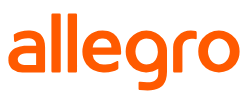Why and how to track leads from advertising your online store?
-
Galina Ostrachinyna
Copywriter Elbuz
When was the last time you lost a potential client due to lack of information? This feeling is probably familiar to every online store owner. Just imagine: the flow of leads is multiplying, but you don’t know how to effectively work with them. To win in this game, it is important to track the path of each lead, starting from the moment they click on the ad. This is the only way to understand which campaigns really work and which ones need improvement. This kind of data is gold in the world of online trading. There are proven tools and methods to successfully automate this process. For example, Google Analytics will help you analyze traffic sources, and CRM systems such as Salesforce, Elbuz, KeyCRM, HubSpot CRM, Zoho CRM, Pipedrive will ensure the storage and processing of customer information. The need for tracking is obvious: you can better understand your audience's needs, increasing conversions and increasing revenue. In the next section, we will look at specific examples of how the introduction of these tools changed the fate of real companies.

Glossary
- 📊 Lead: A potential customer who has expressed interest in Internet products or services store.
- 🎯 Lead tracking: The process of collecting and analyzing data about potential customers who interact with advertising campaigns.
- 📧 E-mail Sequence: A set of automatically sent emails aimed at maintaining and developing interest from potential clients.
- 🗓️ Step-by-step event planning: Development of a plan for marketing activities and events aimed at attracting and supporting leads.
- 🔄 Lead Lifecycle: The phases a potential customer goes through, from first contact to completion of purchase.
- 📈 Sales Pipeline: Visualize the stages that leads go through, from initial contact to close transactions.
- 💡 Lead Scoring: A technique for assigning scores to leads based on their behavior and readiness to buy.
- 📞 Call Tracking: Technology for tracking phone calls and linking them to advertising campaigns and traffic sources.
- 🏷️ Marketing Attribution: The process of determining the contribution of various marketing channels to lead generation and sales.
- 🌐 UTM Tags: Parameters added to the URL to track source, campaign, and other click parameters.
- 📊 Google Analytics: A tool for analyzing web page data, including the ability to track user behavior, including leads .
- ❓ Lead Survey: A method of collecting information by directly communicating with leads through questionnaires and surveys.
- 🖥️ Hidden form field data: Additional information collected through forms on a website that is not visible to the user, but useful for analysis.
- 📚 CRM systems: Software for managing customer relationships and automating interactions with leads.
- 🎟️ Promo Codes: Unique codes that provide special offers and discounts and can be used to track lead sources.
How Lead Tracking Can Improve Your Online Store
I have always strived for maximum efficiency in managing an online store. Lead tracking has become an integral part of this strategy for me, and I want to share my experience and insights.

Sales Process Optimization
When I started tracking leads, I immediately noticed that the sales optimization process had improved significantly. For example, some of my clients began to “drop out” more often when viewing advertisements. I realized that they were either not interested in the proposal, or we had not interacted with them enough.
🔍 Exploring why leads drop out:
- 📌 Uninteresting offers: I found that up to 60% of leads did not move on to the next stage due to the content of the ad.
- 📌 Untimely contacts: Some of the leads simply did not manage to contact in time.
Here's how I solved these problems:
- Usage retargeting for those who left a request but did not complete the purchase.
- Implementation of auto funnels that reduce the time for processing leads (analysis of leads at each stage).
Accurate Financial Projections
Lead tracking has allowed me to make more accurate financial projections. Analyzing monthly and yearly lead patterns makes it possible to see fluctuations in performance and determine averages.

- ✨ Studying patterns in action: For example, seasonal peaks in sales (New Year's holidays) and a decline in the off-season.
This data is extremely useful in budgeting and resource allocation. I realized that knowing the exact numbers for leads and their conversion significantly reduces advertising costs and helps set goals more accurately.
Reducing Lead Leakage
One of the main issues was avoiding lead leakage. Continuous monitoring and analysis allows problem areas to be quickly recognized and responded to. Here's how I deal with it:
- 🟢 Analyzing lead behavior at each sales stage : Implementation of regular reports on the causes of leaks.
- 🟢 Creating timely contact with leads: Organizing teams responsible for immediate interactions.
Important Tools and Tips
Using lead tracking tools has proven to be key:
🔧 Google Analytics: helps you understand at what stage a lead drops out.
🔧 CRM systems: such as Salesforce, Elbuz, KeyCRM, HubSpot CRM, Zoho CRM, Pipedrive for tracking and managing leads.
🔧 Sales Funnel: you can read details about it here.

Using my experience
Applying all of the above helped me significantly improve my conversions. Reducing lead leakage, rational budget allocation and optimization of the sales process - all this is made possible through careful tracking and analysis of leads.
"Effective online store management is impossible without high-quality lead tracking and analysis." - such conclusions are confirmed by many experts, and I completely agree with them.
Best Practices Table:
| Action | Usefulness | Recommendations |
|---|---|---|
| Data analysis leads | ⭐⭐⭐⭐⭐ | Study in detail the reasons for the leak |
| Using CRM | ⭐⭐⭐⭐⭐ | Be sure to implement automation |
| Regular reports and adjustments | ⭐⭐⭐⭐ | Identify problematic steps and respond |
💡 Bottom Line: The tips and tricks outlined above will help you manage your online store more effectively and increase conversions through thorough lead tracking and analysis . I am confident that you will be able to integrate these methods into your practice and get excellent results.
Effective customer tracking strategies
Building a clear email sequence emails
When I first decided to use an email sequence to track leads in an online store, I was guided by a simple rule: one email is not enough. A plan should be developed a week or month in advance to see the true picture of effectiveness. I've found that a well-organized email series can track opens, clicks, responses, and bounces. These are critical indicators for analyzing an advertising campaign.

🤔 For example, one of our projects was a campaign of five letters, each of which was aimed at various aspects of our proposal. Here are a few steps I used to create this strategy:
- 📧 Audience Segmentation — dividing the database into groups based on interests and behavior
- 📈 Monitoring indicators — regular tracking of opens and clicks on links
- ⏳ Engagement analysis - tracking the time that users spend on the site after clicking from an email.
Creating an email sequence helped us identify our most interested prospects and highlight those who needed more persuasion. In my experience, tools like Mailchimp or GetResponse provide all the necessary data for analysis and allow you to adjust strategies in a timely manner.
Useful: Using an email sequence increases your chances of successfully attracting clients.
Not useful: Sending one email without further interaction with the client.
Step-by-step event planning
I always pay special attention to planning events for leads who are into the sales funnel, but are not yet ready to buy. Not all leads are equally valuable at the initial stage, and I believe it is right to devote more time and resources to those who demonstrate interest in our offer.

Some time ago, when I was working on a B2B project, our team developed a detailed action plan using lead generation automation tools. We've broken down the process into clear steps to ensure each step of the interaction reflects where the prospect is and provides relevant content:
- 📅 Scheduling - creating an event schedule and monitoring implementation
- 📊 Feedback analysis - tracking interactions with content
- 📚 Further support - provision of additional materials and suggestions
I believe that these methods minimize waste at the conversion stage and allow you to best identify customer needs.
Useful: Event planning makes interaction with the lead more effective.
Unhelpful: Lack of a clear plan for further steps of interaction.
Following the Lead Life Cycle
The lead cycle can last for months, and I've found that effectively adhering to this cycle is critical to increasing profits. In one of my B2B projects, the cycle could last up to 4 months, and I developed a strategy that included regular touches and customer lifecycle analysis.
🛠️ Using CRM systems such as Salesforce, Elbuz, KeyCRM, HubSpot CRM, Zoho CRM, Pipedrive and others, I carefully tracked every stage of interaction with the client. This allowed me to see which promotions were working and which were not, and adjust our strategy in a timely manner:
- 💼 Analysis stages - regularly check the progress of the campaign
- 🗂️ Long-term strategies - develop plans for long-term engagement
- 📅 Timely updates - keeping content up to date

I believe that optimizing the lead lifecycle leads to significant revenue growth and more efficient use of marketing resources.
Useful: Maintaining a lead cycle increases the likelihood of conversion.
Unhelpful: Ignoring the duration of the cycle and not adapting to it.
Sales pipeline tracking
Sales pipeline tracking allows me to understand what exactly each of our leading at the current stage. In one of our e-commerce projects, we implemented an automated sales pipeline that simplified lead management and increased lead conversion. I've divided the pipeline into clear steps so that each stage represents a specific action:
- 🚀 Identifying Stages - determining what stage each lead is at
- 🔄 Organizing the process - creating standardized approaches to leads
- 🤝 Group interaction - mass actions with personalization
I can confidently say that this approach has made our work more organized and allowed us to effectively manage leads without losing the personal touch.
Useful: Organizing a sales pipeline allows you to better manage the process of interaction with leads.
Unhelpful: Lack of a clear structure and stages of interaction.
Lead Scoring
Lead Scoring is a process that allows me to prioritize clients to focus on the most promising ones. I use various criteria, such as project size and urgency, to determine which leads are worth focusing more resources on.

🏆 In one of the projects I used a lead scoring system using Salesforce, which made it possible to more accurately monitor their behavior and make informed decisions. Here are a few steps that helped me with this:
- 📊 Lead Splitting - Score by priority
- 🎯 Focus on promising - deeper work with the most important clients
- 🧹 Database cleaning - deleting inactive leads
I recommend use this approach because it helps you save resources and focus on leads with the most potential.
Useful: Lead scoring allows you to effectively allocate resources and efforts.
Unhelpful: Equal treatment of all leads without taking into account their priority.If you are interested in such methods, I recommend that you study Call Tracking to get more useful information.
Tools for tracking leads from advertising campaigns
Research shows that lead tracking is critical for an online store to effectively manage budgets and increase conversions. I can share my personal proven methods and tools that have helped me achieve success.

1. Call tracking and marketing attribution
📞 I can say with confidence that call tracking brought me valuable data about our target audience. With its help, each site visitor receives a unique phone number, which allows you to accurately determine the source of the call. For example, in one of my projects we used Ruler Analytics to track calls. The platform provided us with a detailed map of customer touches, and we learned which keywords and campaigns were driving the most calls.
- The program helps marketers:
- 📈 Determine which campaigns generated the most leads
- 🎯 Target effective keywords
- 📰 See which media reaches the right audience
Call tracking and marketing attribution help bridge the gap between marketing efforts and actual sales. I recommend using this method to understand the length and quality of conversations with customers.
2. UTM tracking and Google Analytics
📊 Using UTM tags and Google Analytics was a real revelation in management for me advertising campaigns. I highly recommend you consider this method, especially if you need to understand which channel is generating leads.

- I'm adding UTM tags to the URL addresses and track their effectiveness in Google Analytics:
- 🏷️ Example of such tags:
source,medium,campaign - 📊 Ability to track which channel and campaign leads to conversions
- 🏷️ Example of such tags:
Once, thanks to the good use of UTM tags, I eliminated ineffective campaigns that led to budget savings and increased conversions.
3. Interviewing Prospects Directly
📝 I firmly believe that simple questions can yield a lot of important information. One of the simplest but most effective methods is to include a “How did you hear about us?” field in online forms.
- The introduction of such an element can give an idea:
- 📧 It is necessary to clarify with clients the source of information about your website
- 📉 It is necessary to take into account that the accuracy of the answer depends entirely on the client
In one of my projects, I added this form to an online store website, and the data collected using this simple question helped us build a better advertising strategy.

4. Hidden form fields data
🔍 Another method I've used to track leads is to implement hidden fields on the capture form. These fields are automatically populated when users visit landing pages.
- For example, I added hidden fields along with UTM parameters:
- 🔒 Fields dynamically are filled in when entering data
- 📈 This is useful for PPC campaigns
This way, we were able to see which specific ad campaigns were leading to conversions.
5. Use of CRM systems
💡 The use of CRM systems allows you to automate and simplify customer relationship management. I used this approach to effectively handle the increasing number of leads.
- In my practice, using CRM systems has provided a lot of advantages:
- 💼 Email marketing automation and project management
- 🔍 Analysis and conclusion of main sales trends
I can confidently say that CRM helps you see which offers are most popular with customers, and also significantly reduces the time spent on manual data analysis.
“CRM systems allow us to better understand our customers and optimize sales processes,” says one of my fellow marketers from the ALLO company, Marina Vlasenko .
6. Using promotional codes
🎟️ Promotional codes are an effective tool for not only attracting new customers, but also tracking them. I used this method for one of my advertising campaigns and the results were impressive.
- Benefits of using promotional codes:
- 📊 Filtering purchases to evaluate the impact of an advertising campaign
- 💬 Easy to implement and understand
We once launched a campaign with promotional codes, and this helped us measure the effectiveness and ROI of a particular advertising campaign.
| Methods | Usefulness | Recommendations |
|---|---|---|
| Call tracking | 📈 High | Excellent for getting detailed lead information |
| UTM + GA | 📊 Moderate | Use for channel segmentation |
| Polls | 📝 Low/Moderate | Include if other methods are not possible |
| Hidden fields | 🔍 Average | Great for PPC campaigns |
| CRM | 💼 High | The main tool for managing leads |
| Promotional codes | 🎟️ Moderate | Good for directly tracking the impact of campaigns |
I encourage online store owners to take a look at these techniques and start using them today to improve their marketing strategies and increase advertising effectiveness.
Importance and methods of tracking leads from online store advertising campaigns
When I first started working with online stores, I realized how important it is to track leads from ads to increase conversions and manage your budget. 📈 Analysis of the number of leads signals that changes need to be made in individual channels or advertising campaigns. A decrease or increase in the number of leads is a reflection of the effectiveness of the channel.

So, in one of the projects I noticed that advertising on Facebook attracted a lot of leads, but they were not converted into sales. 📊 After analysis, I discovered that the content did not meet the audience's expectations. Making changes to the content strategy resulted in a significant increase in conversion rates.
🛠 Methods and tools I use to track
End-to-end analytics services
🛠 End-to-end analytics services play a key role in my approach. They collect data from all sources and present it in the form of convenient reports. For example, I often use Google Analytics , which allows me to see the complete picture: from an ad click to a sale on the site.
From personal experience: using end-to-end analytics helped me optimize my advertising campaign budget.
📊 Specific monitoring methods
UTM tags and Call Tracking
Another effective method that I widely use is the use of UTM tags. They allow you to track where each lead came from. In one project, it helped me figure out that the most conversions came through [morning] campaigns rather than evening ones.
📞 Call Tracking also plays an important role. In one of the projects, the implementation of Call Tracking made it possible to understand that a significant number of leads come through calls, and not through filled out forms. This helped me re-prioritize and strengthen my phone call advertising campaigns.

📈 Examples of improvements and scaling of successful campaigns
Case Studies
🚀 One of the most successful examples I would like to share is when my team and I were able to scale a successful Google Ads campaign. We noticed that using specific keywords and targeting specific demographics generated the highest quality leads. Scaling this strategy to other channels resulted in significant sales growth.
🔍 Results
There is only one conclusion - lead analytics plays a key role in managing online store advertising campaigns. I highly recommend:
- 🏆 Implementation of end-to-end analytics services.
- 🔗 Using UTM tags to track lead paths.
- ☎️ Application of Call Tracking to evaluate the effectiveness of telephone calls.
| What to do | What not to do |
|---|---|
| Use end-to-end analytics to get the full picture | Ignore data and work by eye |
| Monitor indicators and make adjustments | Leave channels uncontrolled |
| Optimize the budget based on data | Spend the budget without analyzing the effectiveness |
I am confident that by following these recommendations, you can significantly increase the effectiveness of your advertising campaigns and your conversion rate.

Experience Allegro
Allegro is one of the leading e-commerce platforms specializing in the sale of a wide range of products, from consumer electronics to fashionable clothes.

The main goals and objectives of the company were:
- Ensuring a constant influx of leads from various advertising campaigns.
- Increase conversions from potential clients to regular customers.
- Optimize advertising budget to achieve maximum return on investment (ROI).
Main challenge
Allegro was faced with the challenge of increasing accuracy of tracking leads from different advertising sources, in order to effectively distribute the advertising budget and maximize profits.
Characteristics and interests of the target audience
Allegro's target audience includes both men and women aged 18 to 54 years old. Most of the company's clients:
- Actively use the Internet for shopping.
- Are interested in new technologies and current trends.
- Rate high quality service and fast delivery.

Project results
To achieve its goals, Allegro has implemented several strategic tools and methods:
🌟 Call tracking and marketing attribution Using these tools, the company could track exactly which advertising channels were leading to calls from potential customers. This allowed Allegro to redistribute the advertising budget in favor of the most effective channels.
🌟 UTM Tracking and Google Analytics Adding UTM tags to each ad helped to analyze in detail the behavior of users on the site after clicking on advertising. Google Analytics provided data on traffic , time on site and conversion rate.
🌟 Use of CRM systems Integration of a CRM system made it possible to track the entire life cycle of a lead from the moment of capture to the final conversion. CRM has also contributed to improved customer interactions through sales process automation and customer support.
🌟 Using promotional codes The introduction of unique promotional codes in advertising campaigns made it possible to easily track their effectiveness and identify which advertising messages attract more clients.
Specific results
| Metric | Result |
|---|---|
| Increase in conversion | 35% |
| Reduced customer acquisition costs | 20% |
| Improved customer return rate | 15% |
"Through systematic data tracking and analysis, Allegro was able to optimize its advertising costs and significantly increase the conversion of advertising campaigns. This led to an improvement in the overall effectiveness of marketing efforts and increased profits "- Allegro Marketing Manager, Bronislava Vujicic.
Key Takeaways:
- Effective use of call tracking and CRM systems makes lead management much easier and improves conversion.
- Using UTM tags and Google Analytics helps analyze user behavior in detail and optimize advertising strategies.
- Introducing promotional codes into campaigns allows you to effectively track their success and adjust advertising messages.
Using a variety of lead tracking methods and tools has allowed Allegro to not only improve its current marketing processes, but also build a robust system for future growth and business development.
Frequently asked questions on the topic: Why and how to track leads from advertising your online store?
What is a lead and why is tracking important?
A lead is a potential customer who has shown interest in your product or service. Lead tracking allows you to measure the effectiveness of advertising campaigns and optimize marketing strategies.
What methods are there for tracking leads?
There are several methods for tracking leads: call tracking, UTM tags and Google Analytics, customer surveys, using data from hidden form fields, using CRM systems and promotional codes.
What is the best tool to use for lead tracking?
To track leads in an online store, it is recommended to use a combined strategy using CRM systems, Google Analytics and call tracking.
What role does call tracking play in lead tracking?
Call tracking allows you to track calls from customers, linking them with specific advertising campaigns. This helps to evaluate the effectiveness of various advertising channels.
Why use UTM tags when tracking leads?
UTM tags help you track which advertising sources your customers came from and analyze their behavior on the site using Google Analytics.
How can customer surveys help with lead tracking?
Customer surveys provide direct feedback on which advertising channels and messages work best to attract customers.
What hidden form field data is useful for tracking leads?
Hidden form field data can include traffic source, UTM tags, and other parameters that help determine where the lead came from.
Why use CRM systems for lead tracking?
CRM systems help you centrally store customer information, track their behavior and interactions, and manage the sales process.
How do promo codes help with lead tracking?
Promotional codes allow you to see exactly which advertising channels and advertising campaigns customers came from due to their uniqueness and ability to track usage.
What are the best practices for effective lead tracking?
Effective lead tracking includes preparing email sequences, scheduling events, following the lead lifecycle, tracking the sales pipeline, and scoring leads.
Thank you for reading and for becoming more aware, reader!
Funny how much you can learn in such a short time, right? 😊 Now you have access to methods and tools that will help effectively track and analyze leads. I am sure that you are ready to put the acquired knowledge into practice and turn your online store into a real sales-generating machine.
Try to analyze every lead as valuable information. Share your successes and failures, show that automation and advertising analysis is not magic, but systematic work. Your online business is like a magic book where every page is full of new ideas and solutions. Be effective and successful!
Would you like to tell us more about how you apply these methods? 🎯 Leave a comment, I’d be interested to know your opinion!
Galina Ostranyna , independent expert "Elbuz"

- Glossary
- How Lead Tracking Can Improve Your Online Store
- Effective customer tracking strategies
- Tools for tracking leads from advertising campaigns
- Importance and methods of tracking leads from online store advertising campaigns
- Experience Allegro
- Frequently asked questions on the topic: Why and how to track leads from advertising your online store?
- Thank you for reading and for becoming more aware, reader!
Article Target
Raising awareness among online store owners about the importance and methods of lead tracking
Target audience
online store owners, marketers, entrepreneurs
Hashtags
Save a link to this article
Galina Ostrachinyna
Copywriter ElbuzThe secrets of online store automation are revealed here, like the pages of a magic book of a successful business. Welcome to my world, where every idea is the key to online effectiveness!
Discussion of the topic – Why and how to track leads from advertising your online store?
Informing about the importance of lead tracking for an online store, methods and tools that will help you effectively track and analyze incoming leads from advertising campaigns.
There are no reviews for this product.

















Write a comment
Your email address will not be published. Required fields are checked *